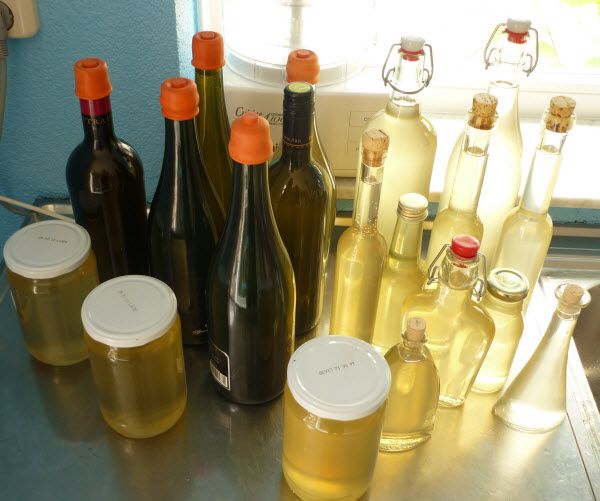Through the Persian (Iran) word Limun to the Turkish limon (lemon) this became the basic word for the beverage in French.
Lemonade according to Living 1870, excerpts from the then 'Winkeler Prins' (encyclopaedia): ... lemon or lime juice, sugar and water. It was first sold openly in Italy around 1630 .... (later also raspberry, cherry berry or strawberry juice ...)
Lemonade is flavored water. If you have your tea cool it’s lemonade. Nowadays usually with carbon dioxide (prick) pumped in. Besides tea of e.g. rose petals you can also thicken(sweetened) juice (with sugar) boiled to syrup to make lemonade. Pomegranate juice is used for grenadine, redcurrant for ’groseille’. If you scoot down the berries with a fork from the stem you avoid the bitter taste of the stalks. Sweeten is possible with honey or sugar.
We sometimes used liquorice to make ’liquorice water’.
Of sugar maple (Acer saccharinum), black maple and red maple, sap is tapped and processed to maple syrup, a sweet syrup.
If you want prick in the lemonade you can make that carbon dioxide with baking soda and an acid (e.g. lemon, fruit etc.). To close prick in the bottle you can solve the baking soda in a little water and freeze it. Drop these cubes in a nearly full bottle of lemonade to fill it completely. The thawing of the blocks ensures the reaction for the formation of bubbles.
Elderflower lemonade
 Cut some lemons in the peel to slices and leave them with purified elderberry blossoms and water (and sugar), covered, draw some days. Strain through a muslin and you get an aromatic, refreshing lemonade.
Cut some lemons in the peel to slices and leave them with purified elderberry blossoms and water (and sugar), covered, draw some days. Strain through a muslin and you get an aromatic, refreshing lemonade.
Carbonated
After a few days the lemonade slightly yeasts. The lemonade is then pearling. You can keep and use him a few days. It is very light alcoholic and is also called elderflower champagne. The name makes it even better.
In Sicily the Flowering ash (Fraxinus ornus) is tapped when the tree is older than eight years. The notches are made in the summer when there are no more new leaves coming. The juice is a sweet white mass that dries quickly to small pieces and is called manna. This manna is edible, helps relieve cough and has a laxative effect. It is also consumed by dissolving manna in hot water or hot milk.
Manna can also be extracted from our common ash.
Make lilac syrup: in the same way as elderflower syrup.
E.g. with 10 lilac (Syringa vulgaris) bunches, 2 organic lemons, 2 liters of (spring) water, 1 kg of cane sugar or 700 grams of organic honey, clean (sterile) bottles and caps. Put a glass jar filled with flowers, water, two lemons in slices 2 days in full sun. Then add 500 g of sugar (for shelf life) and 7 liters of water per liter . Result: a soft pink sweet syrup.
Or with honey:
Pick the flowers from the bunches. Cut the lemons into slices. Put this with the water in a glass jar and leave it for 2 days (eg in the sun). Pour this through a colander containing a clean cloth and wring the cloth well.
Pour the liquid into a pan and let it simmer for 10 minutes.
Then cool to just below 40 degrees Celsius. Add the honey and stir well.
Pour the syrup into well-cleaned (sterile) bottles and close the cap.
The bottles can be kept for 3 months in a clean, cool place.
'Drinking loosens the tongues. Especially coffee. For gossip bitches.’(Johan De Coninck)
